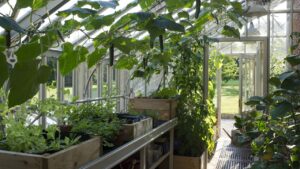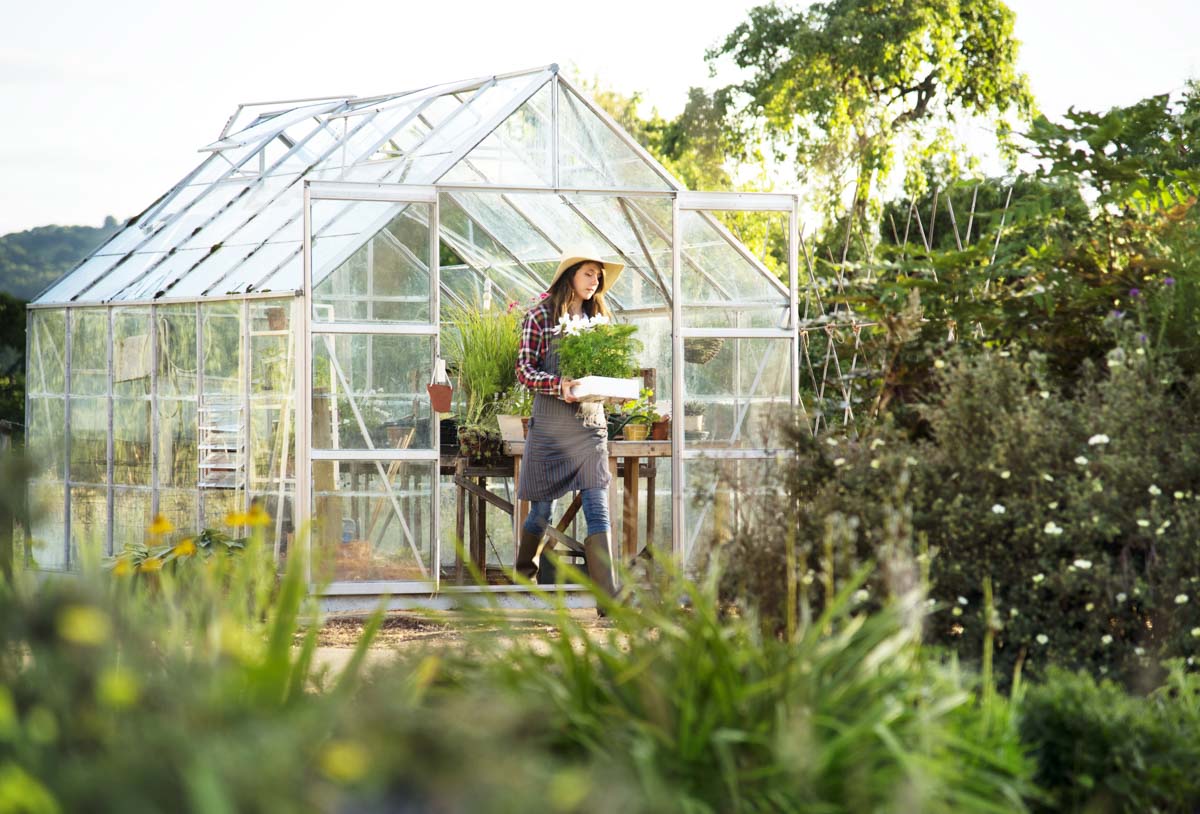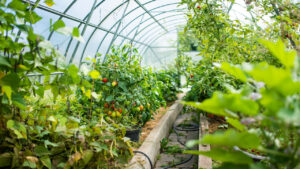Greenhouse Gardening for Beginners: A Step-by-Step Guide
Greenhouse gardening is a rewarding and sustainable way to grow plants, vegetables, and flowers year-round. Whether you’re a novice gardener or an experienced green thumb, a greenhouse offers a controlled environment that can extend your growing season, protect your plants from harsh weather, and even allow you to cultivate exotic species. This comprehensive guide will walk you through the basics of greenhouse gardening, from choosing the right greenhouse to maintaining a thriving garden.
What is Greenhouse Gardening?
A greenhouse is a structure with walls and a roof made primarily of transparent material, such as glass or plastic, that allows sunlight to enter and traps heat inside. This creates a warm, stable environment ideal for plant growth, regardless of the external weather conditions. Greenhouse gardening involves cultivating plants within this controlled space, offering numerous benefits:
- Year-Round Growing: Grow plants even in winter or during unfavorable weather.
- Pest and Disease Control: Protect plants from pests and diseases.
- Optimal Growing Conditions: Control temperature, humidity, and light levels.
- Versatility: Grow a wide variety of plants, including vegetables, flowers, and exotic species.
Why Start Greenhouse Gardening?
Greenhouse gardening is an excellent choice for anyone looking to enhance their gardening experience. Here’s why you should consider it:
- Extended Growing Season: Grow plants outside their natural season.
- Higher Yields: Achieve better growth and higher yields due to optimal conditions.
- Experimentation: Try growing unique or exotic plants that wouldn’t survive in your local climate.
- Sustainability: Reduce your carbon footprint by growing your own food and reducing reliance on store-bought produce.
Step-by-Step Guide to Greenhouse Gardening
Step 1: Choose the Right Greenhouse
The first step in greenhouse gardening is selecting the right structure. Consider the following factors:
- Size: Determine how much space you need based on the number and type of plants you want to grow.
- Material: Choose between glass, polycarbonate, or plastic for the walls and roof. Glass is durable and provides excellent light transmission, while polycarbonate is lightweight and offers better insulation.
- Style: Options include lean-to, freestanding, and hoop houses. Lean-to greenhouses are attached to a wall, while freestanding structures are independent.
- Budget: Greenhouses range from affordable DIY kits to high-end custom designs. Set a budget that suits your needs.
Step 2: Select a Location
The location of your greenhouse is crucial for its success. Look for a spot that:
- Receives Plenty of Sunlight: Aim for at least 6 hours of direct sunlight daily.
- Has Good Drainage: Avoid areas prone to flooding or waterlogging.
- Is Sheltered from Strong Winds: Protect your greenhouse from damage by placing it near a windbreak, such as a fence or trees.
- Is Accessible: Ensure easy access to water, electricity, and tools.
Step 3: Prepare the Foundation
A solid foundation is essential for stability and insulation. Options include:
- Concrete Slab: Durable and long-lasting but more expensive.
- Gravel or Pavers: Affordable and easy to install.
- Wooden Frame: Suitable for smaller greenhouses but may require maintenance.
Step 4: Set Up the Greenhouse
Once you’ve chosen your greenhouse and prepared the foundation, it’s time to assemble the structure. Follow the manufacturer’s instructions carefully, or hire a professional if needed. Ensure proper ventilation by installing vents, windows, or fans.
Step 5: Choose Your Plants
Select plants that thrive in a greenhouse environment. Beginners should start with easy-to-grow options like:
- Vegetables: Tomatoes, cucumbers, peppers, and lettuce.
- Herbs: Basil, parsley, mint, and cilantro.
- Flowers: Orchids, geraniums, and petunias.
- Fruits: Strawberries, melons, and citrus trees.
Step 6: Prepare the Soil
Healthy soil is the foundation of a successful greenhouse garden. Use a high-quality potting mix or create your own by combining:
- Compost: Adds nutrients and improves soil structure.
- Perlite or Vermiculite: Enhances drainage and aeration.
- Peat Moss: Retains moisture and provides organic matter.
Step 7: Plant and Space Your Crops
Follow these tips for planting:
- Seed Starting: Start seeds in trays or pots before transplanting them into the greenhouse beds.
- Spacing: Ensure adequate space between plants to prevent overcrowding and promote airflow.
- Companion Planting: Grow compatible plants together to maximize space and deter pests.
Step 8: Monitor and Maintain the Environment
A greenhouse requires regular monitoring to maintain optimal growing conditions. Key factors to manage include:
- Temperature: Use a thermometer to monitor temperature. Install heaters for winter and shade cloths or fans for summer.
- Humidity: Maintain humidity levels between 50-70% using misters or dehumidifiers.
- Light: Ensure your plants receive sufficient light. Use grow lights if natural sunlight is inadequate.
- Watering: Install an irrigation system or water plants regularly to keep the soil moist but not waterlogged.
Step 9: Pest and Disease Management
Greenhouses can still be susceptible to pests and diseases. Prevent issues by:
- Inspecting Plants Regularly: Check for signs of pests or disease.
- Using Natural Predators: Introduce beneficial insects like ladybugs to control pests.
- Practicing Good Hygiene: Clean tools, pots, and surfaces to prevent contamination.
- Applying Organic Pesticides: Use neem oil or insecticidal soap as needed.
Step 10: Harvest and Enjoy
As your plants grow, harvest them at their peak for the best flavor and nutrition. Regular harvesting also encourages continuous growth. Enjoy the fruits (and vegetables) of your labor in your meals or share them with friends and family.
Tips for Successful Greenhouse Gardening
- Start Small: Begin with a few plants and gradually expand as you gain experience.
- Keep Records: Track planting dates, growth progress, and environmental conditions to learn and improve.
- Rotate Crops: Prevent soil depletion by rotating crops each season.
- Stay Organized: Keep tools, seeds, and supplies neatly organized for easy access.
Common Challenges and Solutions
1. Overheating
Greenhouses can become too hot in summer. Solve this by:
- Installing Vents or Fans: Improve airflow and reduce temperature.
- Using Shade Cloths: Block excess sunlight during peak hours.
2. Poor Ventilation
Inadequate ventilation can lead to mold and disease. Ensure proper airflow by:
- Adding Windows or Vents: Allow fresh air to circulate.
- Using Exhaust Fans: Remove stale air and regulate humidity.
3. Pest Infestations
Prevent pests by:
- Using Screens: Keep doors and vents covered with fine mesh.
- Introducing Beneficial Insects: Use natural predators to control pests.
4. Watering Issues
Avoid overwatering or underwatering by:
- Installing Drip Irrigation: Provide consistent moisture to plants.
- Monitoring Soil Moisture: Use a moisture meter to check soil conditions.

Conclusion: Embrace the Joy of Greenhouse Gardening
Greenhouse gardening is a fulfilling and sustainable way to grow plants, regardless of the season or climate. By following this step-by-step guide, you can create a thriving greenhouse garden that provides fresh produce, beautiful flowers, and a sense of accomplishment. Whether you’re growing vegetables for your family or cultivating exotic plants, the possibilities are endless.
So, roll up your sleeves, gather your tools, and embark on your greenhouse gardening journey. With patience, care, and a little bit of knowledge, you’ll soon be reaping the rewards of your efforts. Happy gardening!


